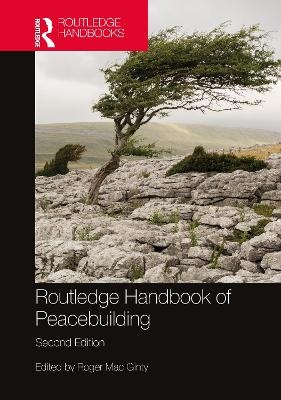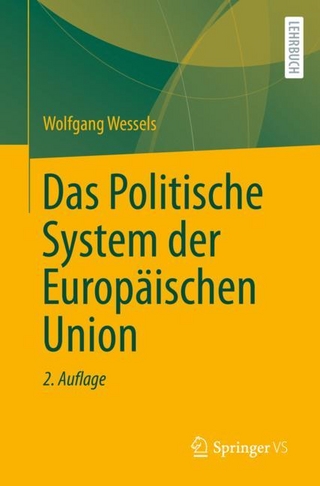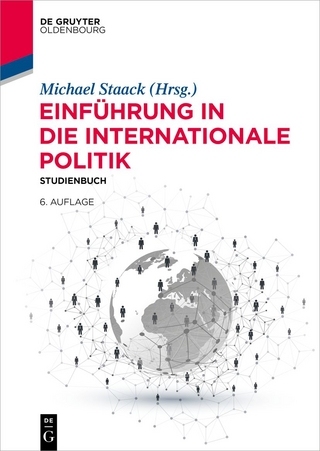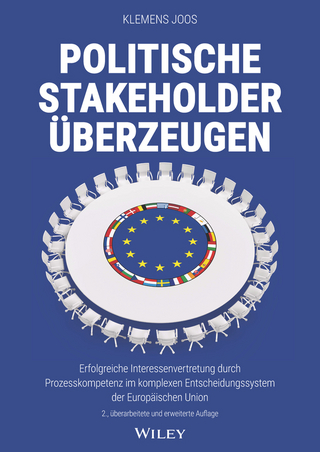
Routledge Handbook of Peacebuilding
Routledge (Verlag)
978-1-032-27577-2 (ISBN)
The book covers the main actors and dynamics of peacebuilding, as well as the main challenges that it faces, with accessible chapters. The volume is comprehensive, covering everything from the main international institutions for peacebuilding to the links between peacebuilding and climate change, or peacebuilding and trauma. It is also firmly interdisciplinary, with a number of chapters devoted to showcasing how different disciplines interpret peacebuilding and how they contribute to it. Bringing together leading thinkers and practitioners on peacebuilding, many from the Global South, the handbook offers a valuable “hands-on” perspective on how peace can be secured and sustained. There is a significant emphasis on comparison and the book shows how peacebuilding is best examined from the vantage point of multiple cases.
The book is organised into six thematic sections:
Part I: Architecture and Actors
Part II: Reading Peacebuilding
Part III: Issues and Approaches
Part IV: Violence and Security
Part V: Everyday Living
Part VI: Disciplinary Approaches
This book will be essential reading for students of peacebuilding, mediation and post-conflict reconstruction, and of great interest to students of statebuilding, intervention, civil wars, conflict resolution, war and conflict studies and IR in general.
Roger Mac Ginty is Professor at the School of Government and International Affairs, and the Durham Global Security Institute, both at Durham University. He is author of three books, and has edited/co-edited 11 books. He is founding editor of the journal Peacebuilding and co-founder of the Everyday Peace Indicators.
Introduction PART I: ARCHITECTURE AND ACTORS 1. The Evolution of Peacebuilding 2. The International Architecture of Peacebuilding 3. Women, Peace and Security 4. Civil Society and Peacebuilding 5. 'Illiberal Peacebuilding' and Authoritarian Conflict Management 6. Unusual Peacebuilders PART II: READING PEACEBUILDING 7. Problem-Solving and Critical Approaches 8. The Limits of Peacebuilding 9. A Postcolonial Reading of ‘Peace from Below’ 10. African Perspectives on Peacebuilding 11. Agonistic Peacebuilding PART III: ISSUES AND APPROACHES 12. Sustaining Peace Through Social Contracts 13. Gender and Peacebuilding 14. Religion and Peacebuilding 15. Climate Change and Peacebuilding 16. Emotions, Reconciliation and Peacebuilding 17. Memory, Politics and Peace 18. Storytelling and Peacebuilding 19. Mediation and Peacebuilding 20. Trauma and Peacebuilding PART IV: VIOLENCE AND SECURITY 21. Security Sector Reform 22. Disarmament, Demobilization, Rehabilitation, Reintegration and Repatriation in Africa 23. Violence Reduction and Peacebuilding 24. Zones of Peace 25. Community Self-Protection in Colombia PART V: EVERYDAY LIVING 26. Everyday Peace 27. Education, Learning and Peacebuilding 28. Youth and Peacebuilding 29. Everyday Political Economies of Peacebuilding PART VI: DISCIPLINARY APPROACHES 30. International Relations Theory and Peacebuilding 31. Sociology and Peacebuilding 32. Sociolinguistics and Peacebuilding 33. Anthropology and Peacebuilding 34. Social Psychology and Peacebuilding
| Erscheinungsdatum | 01.08.2024 |
|---|---|
| Zusatzinfo | 3 Line drawings, black and white; 3 Illustrations, black and white |
| Verlagsort | London |
| Sprache | englisch |
| Maße | 174 x 246 mm |
| Gewicht | 1000 g |
| Themenwelt | Sozialwissenschaften ► Politik / Verwaltung ► Europäische / Internationale Politik |
| Sozialwissenschaften ► Politik / Verwaltung ► Staat / Verwaltung | |
| ISBN-10 | 1-032-27577-4 / 1032275774 |
| ISBN-13 | 978-1-032-27577-2 / 9781032275772 |
| Zustand | Neuware |
| Haben Sie eine Frage zum Produkt? |
aus dem Bereich


